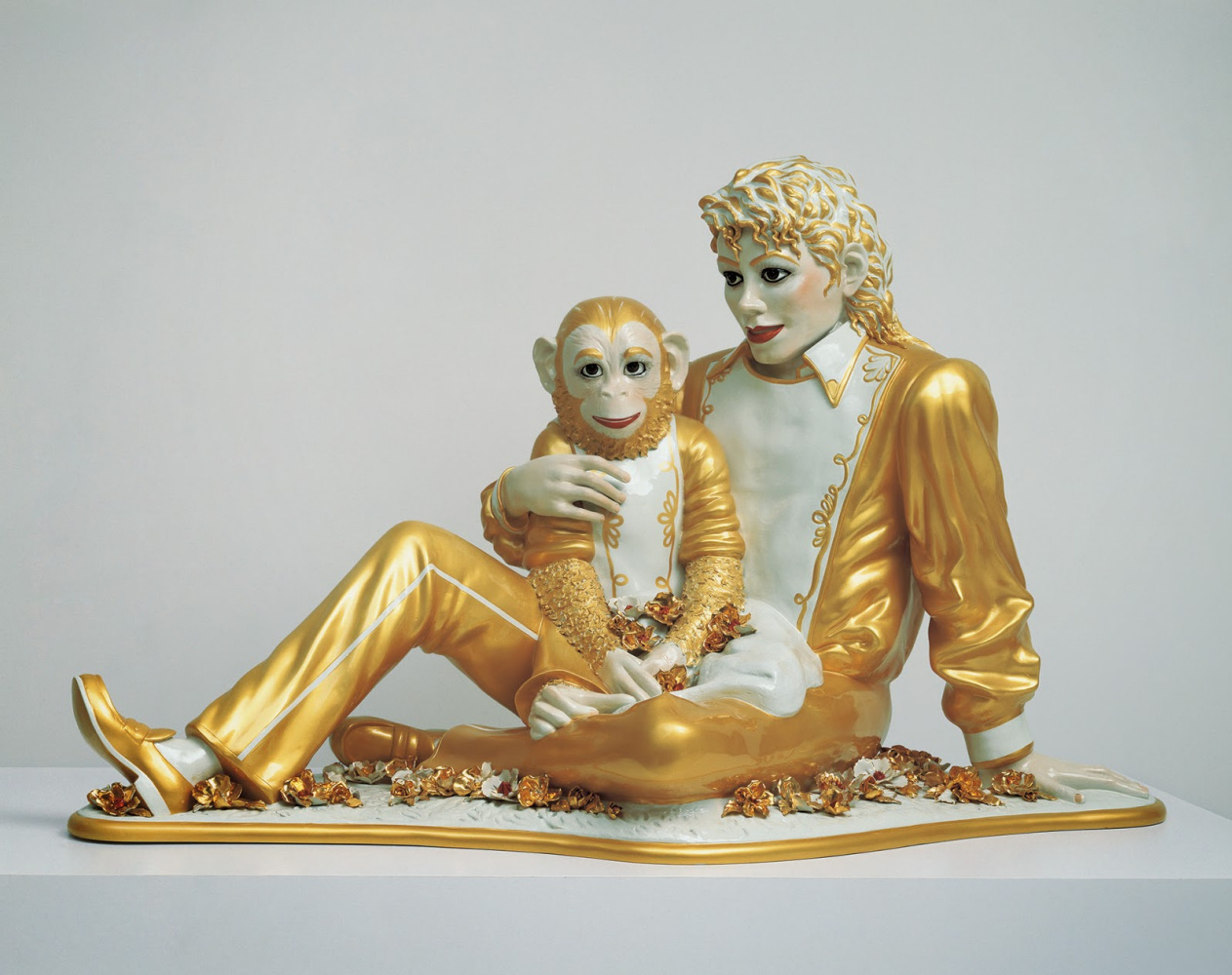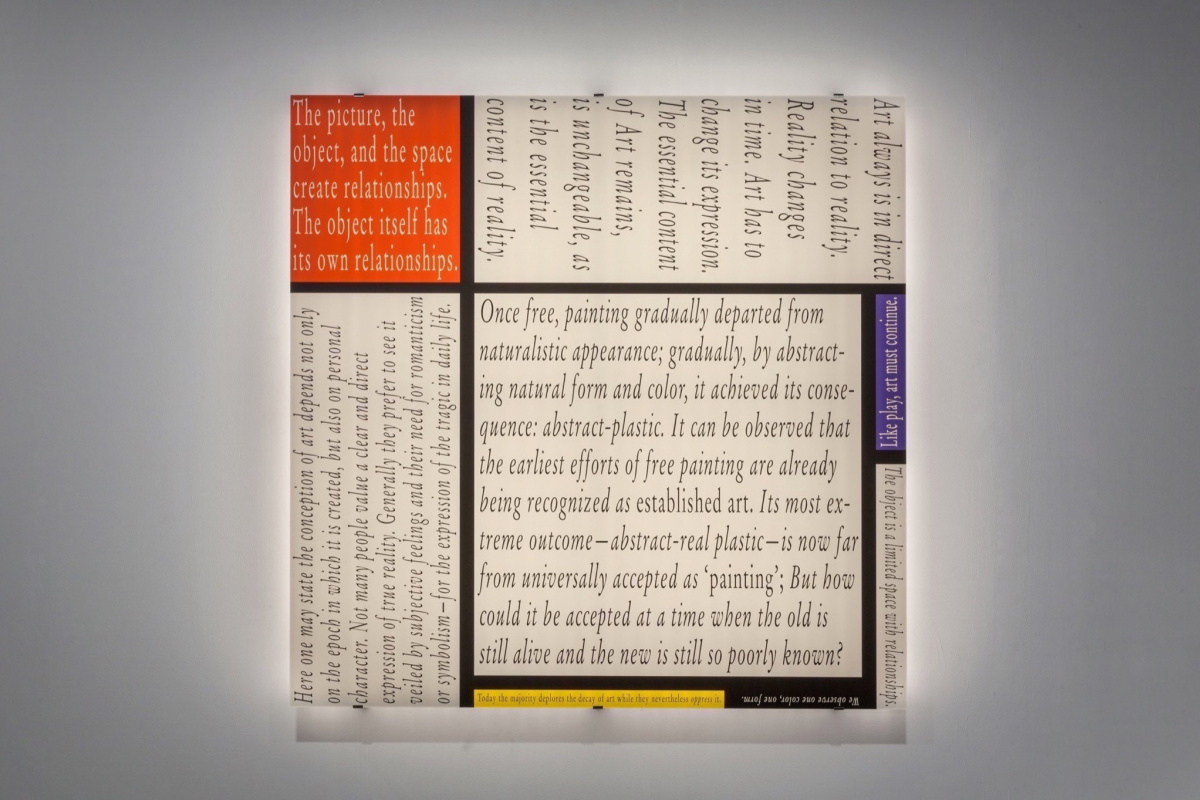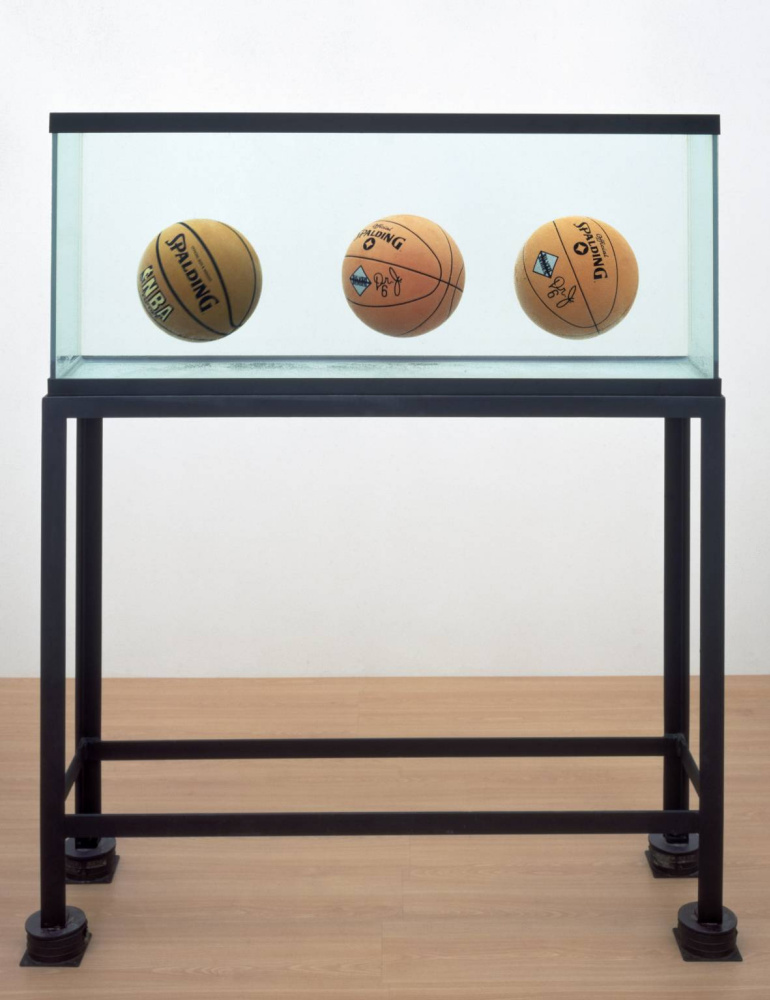Postmodernism is a cultural, social, philosophical phenomenon. It is a powerful reaction to the ideas and achievements of high modernism
, to its belief in progress, science, technical development, absolute truth, to its experimental excitement. It is a reaction to abstract expressionism
as the final point in the development of modernism, after which there is no room for experiments with form, colour, perspective, individual style.

Postmodernism in its modern meaning was discussed in the late 1960s. And in the philosophical theories, it found its place in the 1970s thanks to Jean-François Lyotard and Jacques Lacan. Pop art artists have already been widely using the portraits of Monroe and Elvis that were cut from magazines, they painted Gagarin and Kennedy, Victor Vasarely drew optical illusions, and Alexander Calder hung coloured glass on the first mobiles, Niki de Saint Phalle fired from her shotgun at the canvases, and Jean Tangley built a moving machine that destroyed itself, conceptualists have already been using the texts that were written in lambent handwriting, photocopies, films and their own body language as the language of art, Yoko Ono sat on the stage, offering the audience to cut pieces from her dress. Abstract expressionism
made the whole world talk about a new terrible peak of modernism, after which there was nowhere to climb, after which the way was unknown. The car, in which Jackson Pollock set off on his last journey, had long been chasing up in a landfill, and Mark Rothko was ready to lose his life without regrets, purposefully killing himself with alcohol and plunging into depression. The last modernist Joan Miró stocked up with gasoline and matches to set fire to a dozen canvases and put an end to the very idea of modernism.
Sweet dreams, baby!
1965, 90.5×64.8 cm
Key moments
1. The American pop artists are considered the first prophets of postmodernism. For several years, they completely demolished the sacred border, which has shared high art and mass art for centuries. They questioned not only the mission of art to achieve some important goals, but the viewer was allowed not to have any special experience of vision, understanding, knowledge acquired in advance.In 1982, literature theorist Fredric Jameson wrote in his Postmodernism and Consumer Society essay:
"Many of the newest types of postmodernism were simply mesmerized by the whole landscape of billboards and motels, the Las Vegas area, night shows, second-rate Hollywood films, the so-called paraliterature, all these paperback books for road reading — Gothic, love stories, popular biographies, detective stories, science fiction or fantasy. They no longer 'quoted' similar 'texts', as Joyce or Mahler did; they incorporated them so much that it became harder and harder to draw the line between high art and commercial forms."
"Many of the newest types of postmodernism were simply mesmerized by the whole landscape of billboards and motels, the Las Vegas area, night shows, second-rate Hollywood films, the so-called paraliterature, all these paperback books for road reading — Gothic, love stories, popular biographies, detective stories, science fiction or fantasy. They no longer 'quoted' similar 'texts', as Joyce or Mahler did; they incorporated them so much that it became harder and harder to draw the line between high art and commercial forms."
2. For several decades, modernism
invaded the museums and art academies, private galleries and even the interior spaces of the international foundations and organizations headquarters, city halls of capitals and airports. For the generation of the 60s, modernism
became a new establishment, a new academicism, and its successful media leaders (Picasso, Dalí, Gropius, Mies van der Rohe) turned into boring lifetime golden monuments, the heroes of textbooks.

Houston Children’s Museum, Texas. Architect: Robert Venturi, 1992
3. For the first time in art history, an entire era, which captured the whole world over time, began in America. On the continent, which joined the Western European art processes somewhere at the stage of realism and impressionism
, it was time to rethink and appropriate all previous styles and eras: baroque
, rococo, even classicism
.
Postmodernism imitated and quoted stylistics of those art movements, sometimes achieving almost kitsch eclecticism and redundancy of decorations.
The American architect, one of the theorists and the founders of postmodern architecture, Robert Venturi, paraphrased the famous modernist Mies van der Rohe’s credo "Less is more" with the ironic "Less is boring".
4. Ironic art historians claim that they can name the exact date and even time when modernism suffered a final defeat. On 15 July 1972, at 3:32 p.m., three of the thirty-three buildings in the Pruitt-Igoe social housing quarter in St. Louis were blown up. And with them collapsed the modernist idea of multi-storey concrete construction as a symbol of equality, of buildings as "machines for life" (as Le Corbusier, theorist and prophet of brutalism called his residential projects). Over 20 years of operation, the Pruitt-Igoe area became a dangerous place with a terrifying crime growth and huge unemployment. The demolition of the whole quarter was completed by 1976.
Postmodernism imitated and quoted stylistics of those art movements, sometimes achieving almost kitsch eclecticism and redundancy of decorations.
The American architect, one of the theorists and the founders of postmodern architecture, Robert Venturi, paraphrased the famous modernist Mies van der Rohe’s credo "Less is more" with the ironic "Less is boring".
4. Ironic art historians claim that they can name the exact date and even time when modernism suffered a final defeat. On 15 July 1972, at 3:32 p.m., three of the thirty-three buildings in the Pruitt-Igoe social housing quarter in St. Louis were blown up. And with them collapsed the modernist idea of multi-storey concrete construction as a symbol of equality, of buildings as "machines for life" (as Le Corbusier, theorist and prophet of brutalism called his residential projects). Over 20 years of operation, the Pruitt-Igoe area became a dangerous place with a terrifying crime growth and huge unemployment. The demolition of the whole quarter was completed by 1976.

One of the most famous art groups in postmodernism was Young British Artists (YBA). In addition to Damien Hirst and his sharks in formaldehyde, the most striking works of this direction are considered to be "Everyone I Have Ever Slept With" and "My Bed" by the provocative artist Tracy Emin.
The art of quoting
At an Australian university, art history professor Daniel Palmer asked students to respond to what postmodernism is. One of the answers was: it’s when you quote everything. Perhaps, this is the most accurate short answer, which requires detailed decryption.The paradox of the highest achievements of modernism was that they were rapidly brining closer the end of modernism. Each new art movement, each new individual style extracted its part from the accessible (limited, of course) set of variations. It was possible to predict the threat of final exhaustion, even when Malevich created his "Black Square" or later Duchamp signed on the urinal. For some 80 years, all possible experiments have been completed in art, and each of them has been accepted and assigned by history. Modern artists sought recognition not only in life, but in their youth. Art critics, weighed down by corporate guilt for the unrecognized genius of Van Gogh, learned to instantly respond to new rebels and acknowledge their innovation.
Mondrian's Work XII
2016
The work by conceptualist Joseph Kosuth is a quotation of the signature style of the artist Pete Mondrian. However, on the coloured details of the recognizable Mondrian composition, Kosuth placed the fragments of an art essay: for example, the phrase about the object interaction, a picture and space is placed in a red rectangle.
Such swiftness of the movement led to the moment when everything had already been said. And for all the variety of signature styles and the styles of individual artistic directions, postmodernism had to respond with its own diversity.
Fredric Jameson argues that the pastiche turned out to be the key concept of postmodernism: "So the burden of the whole aesthetic tradition of modernism, which is dead now, ‘puts pressure on the mind of the living like a nightmare', as Marx once put it in a different context. From here again we come to pastiche: all that remains for us in the world where stylistic innovations are no longer possible is to imitate dead styles, speak through the mask with the voice of these styles from an imaginary museum."
Pastiche is an imitation of the style of an individual artist or several artists. And, unlike parody, pastiche does not make fun of the original, but carefully examines it and fits into its framework until it is impossible to isolate the differences. And here follows another important feature of postmodernism — the irony. Inconsistency, ambiguity, decorative redundancy, deception of the aesthetic expectations of the viewer — artists and architects of the postmodern era justify all these extremes with irony.
There is no longer a generally accepted concept of beauty and no secret meaning in art, as there is no single truth or moral norm in society. So, there is no an artist who wants to say something, and the viewer is no longer obliged to decrypt it.
Fredric Jameson argues that the pastiche turned out to be the key concept of postmodernism: "So the burden of the whole aesthetic tradition of modernism, which is dead now, ‘puts pressure on the mind of the living like a nightmare', as Marx once put it in a different context. From here again we come to pastiche: all that remains for us in the world where stylistic innovations are no longer possible is to imitate dead styles, speak through the mask with the voice of these styles from an imaginary museum."
Pastiche is an imitation of the style of an individual artist or several artists. And, unlike parody, pastiche does not make fun of the original, but carefully examines it and fits into its framework until it is impossible to isolate the differences. And here follows another important feature of postmodernism — the irony. Inconsistency, ambiguity, decorative redundancy, deception of the aesthetic expectations of the viewer — artists and architects of the postmodern era justify all these extremes with irony.
There is no longer a generally accepted concept of beauty and no secret meaning in art, as there is no single truth or moral norm in society. So, there is no an artist who wants to say something, and the viewer is no longer obliged to decrypt it.
Three goals in perfect balance
1985, 153.6×123.8×33.6 cm
The author is dead
The literary critic Roland Barthes stated this in a 1967 essay. This work is primarily about literature and the authors of literary works, but, as for any era, the same conclusions are relevant for all types of art. In postmodernism, the artist is dead. The artist in the sense in which he/she has been seen so far. He is no longer the Creator, whose feelings, experience and knowledge form the basis of the work. This is a person who has recorded and collected a set of quotes from the entire huge array of techniques and images accumulated by culture over the millennia of its existence.Roland Barthes wrote: "… the text is composed of many different types of writing, originating from different cultures and entering into a relationship of dialogue, parody, debate, but all this multiplicity is focused at a certain point, which is not the author, as claimed so far, but the reader. The reader is the space where every single quote is imprinted, from which the letter is composed; the text finds its unity not in its origin, but in purpose, although the purpose is not a personal address; the reader is a man without history, without a biography, without psychology, he is just someone bringing together all those touches that form a written text."

A fragment of the Relations in Time performance by Marina Abramović, 1977
Therefore, performance became the central form of art, an action taking place here and now and involving the viewer as much as possible in the creation process. Therefore, in the visual arts, there are so many styles with the prefix neo: neo-geo (or neo-geometry, the style that combined and transformed the experience of op art and abstract art), neo-expressionism and even neo-pop by Jeff Koons with his golden Michael Jackson in full growth and ball sculptures.

Despite the fact that the art by the artist Louise Bourgeois is often called a continuation of the surrealist ideas, she calls her sculptures rather a parody of surrealism. In her sculptures, one can find both the formal influence of ancient Greek and ancient American sculptures, modernist sculptors, and images clearly inspired by shots from Hollywood horror films.
No original
In art history, any art movement positioned itself regarding the reality. And no matter how enthusiastic even modernists were with experiments with colour, shape, perspective, in their manifests the position regarding the real world always sounded.The postmodern artist existed in the system of signs and he/she juggled them without any attempt to establish a connection with reality at all.
The French philosopher Jean Baudrillard introduces the term "simulacrum", known since the time of Plato, in the postmodern context. But now it is "the reality that hides the fact that it does not exist". The copy without the original, the artifact without the history.

Damien Hirst, "Hydra and Kali" (two versions) and "Hydra and Kali under water (underwater photo of Christoph Gerigck)". Photo: Prudence Cuming Associates © Damien Hirst and Science Ltd.
One of the most striking demonstrations of the simulacrum is Damien Hirst’s Treasures from the Wreck of the Unbelievable exhibition. This was a grandiose hoax, a fictional art story, carefully prepared (Hirst worked on the exhibits for 10 years) and a recited performance. According to Hirst, the ship that never existed sank off the coast of Africa 2,000 years ago. It was a work of art from all countries, heading to the museum. Each Hirst’s exhibit existed in three versions: the one supposedly raised from the bottom and covered with corals, the restored "original" and its "copy". The exhibition is accompanied by pseudo-documentary underwater filming from the crash site. Enchanting simulacrum, workshop fake reality.

















